Do you want to become a fashion photographer? If so, then this guide to fashion photography is the perfect place to start.
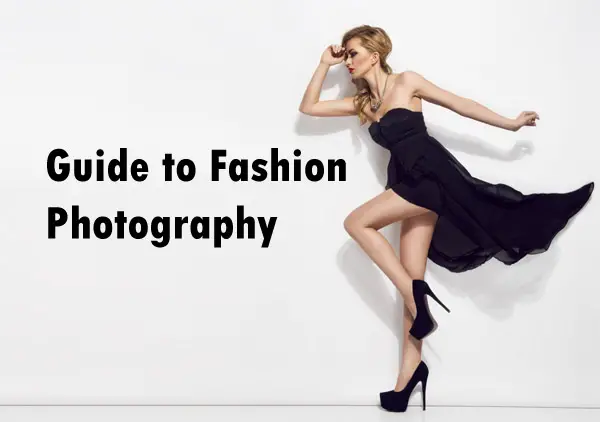
This guide will provide all the essential knowledge required for anyone to get into fashion photography, from equipment needed, cameras and lenses that work best, settings including aperture and shutter speed as well as lighting techniques. Plus movement, composition advice, information on how to get models – even specific websites where they can be found.
Types of Fashion Photography
Fashion photography is a specialized art form that captures the essence of clothing and accessories for fashion designers, magazines, and other outlets. There are three main types of fashion photography: editorial, commercial, and street style.
Editorial fashion photography is typically seen in high-end magazines such as Vogue or Harper’s Bazaar. This type of fashion photography focuses on telling stories through images by creating beautiful scenes with models wearing designer clothes from the latest collections. Editorial shoots usually involve makeup artists, hair stylists, wardrobe stylists, set designers, photographers and other creative professionals to create a complete look for each shot. The goal is to capture an aesthetic that can be used to tell a story about the clothes being worn or showcase a certain trend in the industry.
Commercial fashion photography has more practical applications than editorial work; it often appears in catalogs or advertisements for stores selling clothing items. Commercial shoots are typically less complex than editorial ones since they focus mainly on showcasing products rather than telling stories with them. Photographers need to have an eye for detail when shooting this type of work so they can make sure all elements—such as lighting setups and camera settings—are perfect before taking photos of each item being sold by their client’s store or brand.
Street style fashion photography has recently become quite popular, thanks to social media platforms like Instagram where folks flaunt their personal styles with fashionable pieces from all over. Street style photographers often snap candid shots while out and about at events such as music festivals or Fashion Weeks, where people tend to dress up more extravagantly than usual in order to make a statement. They also take portraits of stylish individuals who have caught their eye, but these types of shots require proper lighting techniques if you want them looking top-notch.
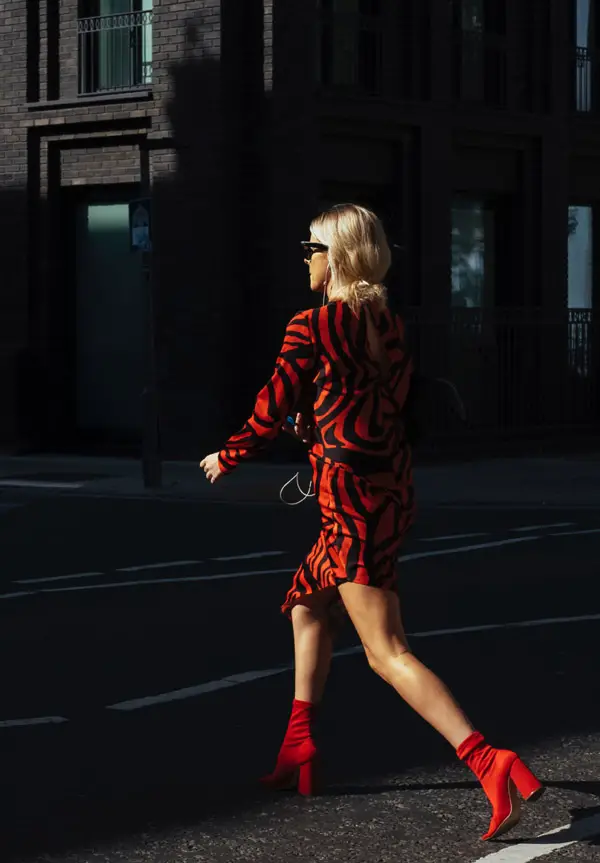
Catalog photography is utilized by retailers who require pictures of their products for online catalogs or print advertisements. Photographers often employ specialized lighting techniques, such as “clamshell” setups, to create soft illumination on both sides of the model while still providing sufficient contrast between them and the background environment so that customers don’t get distracted from what they’re wearing when viewing these images later down the line. With this in mind, models are photographed against plain backgrounds wearing items from a store’s collection to ensure easy display online without any distractions from other elements within the photo frame like furniture or props which could divert attention away from what’s being sold -the clothes.
Fashion photography can be a stimulating and lucrative career, yet it is crucial to comprehend the various kinds of fashion shoots before embarking on this path. With the right equipment, you will be well-equipped to capture stunning images in any type of fashion shoot.
Equipment Needed
When it comes to fashion photography, the correct equipment is indispensable. Professional photographers need a wide range of gear in order to capture high-quality images that meet their clients’ expectations. From cameras and lenses to lighting and accessories, here are some of the basics you’ll need for successful fashion shoots. The right combination will allow you to capture stunning shots that show off the clothing, accessories, and models in their best light.
Cameras
You will need a digital SLR or mirrorless camera with manual controls. Look for one with good low light performance and fast autofocus so you can quickly capture fleeting moments on set. It’s also important to have multiple memory cards on hand in case one fills up during a shoot, preferably a dual slot camera.
When selecting a camera, you should consider its image quality, particularly the resolution. When selecting a camera, consider the type of shoot you’ll be doing—editorial, commercial or street style.
A high-quality camera with a full-frame sensor is recommended for fashion photography. Some popular options include Canon EOS R6, Sony A7R IV, and Nikon Z7 II.
Lenses
Having the right lens can make all the difference when shooting fashion photography. Prime lenses (fixed focal length) offer superior sharpness and lower distortion compared to zoom lenses, but they limit your ability to change framing without moving closer or further away from your subject. Good quality zoom lenses provide more flexibility while sacrificing some image quality, so consider using both types depending on what kind of shots you’re taking at each location.
For lenses, look for ones with wide maximum apertures so you can create shallow depth of field effects that help draw attention to your subject matter. Prime lenses offer better low light performance as well as faster autofocus speeds which are both important considerations when shooting fast paced runway shows or editorial shoots where time is limited.
Fashion photography requires a range of lenses, including wide-angle lenses for full-body shots, portrait lenses for close-ups, and telephoto lenses for distant shots. Some popular options include Canon EF 24-70mm f/2.8L II USM, Sony FE 70-200mm f/2.8 GM OSS, and Nikon AF-S NIKKOR 85mm f/1.4G.
Lighting
Natural light often provides the most flattering results but artificial lighting can add drama and texture to an image. Experiment with different lighting setups such as softboxes, reflectors and umbrellas to get creative with your shoots and create unique looks that will stand out from the crowd. Make sure you have enough power sources so you don’t run out of juice mid-shoot.
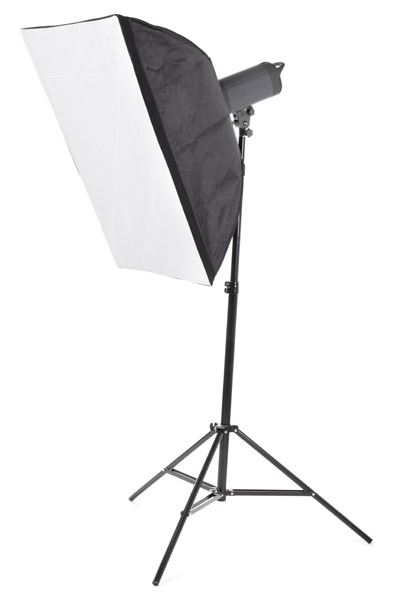
When it comes to lighting gear, you should put money into good tools that are convenient and can be set up swiftly at the shooting spot. A popular choice among photographers is continuous lighting systems such as LED panels which offer adjustable brightness levels and color temperatures that can be used for both video and stills photography. Another option is flash units like speedlights which provide more power but require additional setup time due to their portability factor. Both types of lights come with modifiers such as softboxes or umbrellas that diffuse light evenly across a subject’s face while minimizing any harsh shadows caused by direct light sources.
It is recommended to use a combination of natural light, studio lights, and reflectors to create different moods and effects. Some popular options include Profoto B10 Plus, Godox AD400 Pro, and Elinchrom D-Lite RX 4.
To ensure a successful fashion photography shoot, it is important to take preventive measures and be well-prepared before beginning any session. Professional photographers often use natural light for its soft illumination that flatters skin tones and brings out details in clothing textures without harsh shadows or hot spots on faces/clothes.
I was fortunate to have not experienced any setbacks during my shoot. I made sure that the stands and reflectors were sufficiently stable in order for me to adjust angles or positions mid-shoot without fear of them toppling over. Additionally, I ensured that all artificial lighting was properly adjusted before commencing with the session so there would be no need for reshoots later on down the line.
Tripods
Tripods and stands come in handy for keeping cameras steady during long exposures or when shooting at night without flash. A sturdy tripod will ensure your photos stay sharp no matter how much movement there is around you; if you plan on taking handheld shots too then look into buying a monopod which gives extra stability without weighing down your bag too much. Investing in good quality gear now will save time and money later so make sure not to skimp on these items – they really do make all the difference between average photos and professional ones.
A sturdy tripod is useful for shooting stable images, especially in low light and natural light situations. Some popular options are the Manfrotto MT055CXPRO4, Gitzo Systematic Series 3 Tripod, and Induro Alloy 8M AT214 Tripod.
Backdrops
A plain, neutral-colored backdrop is useful for fashion photography. Some popular options include Savage Seamless Background Paper, Westcott X-Drop Background System, and Lastolite HiLite Background.
Editing Software
Post-processing is an essential part of fashion photography, and professional photographers typically use Adobe Lightroom or Photoshop for editing their images.
Settings for Fashion Photography
When it comes to fashion photography, there are a few key camera settings that you need to be aware of. Adjusting the aperture, shutter speed and ISO settings can all have a profound impact on capturing the desired fashion photography shot. Aperture controls how much light is let into the lens and affects depth of field. Shutter speed determines how long the exposure lasts and can help freeze motion or create blur effects. Sensor sensitivity to light can be adjusted through ISO settings, thereby enabling you to adapt for varying illumination levels.
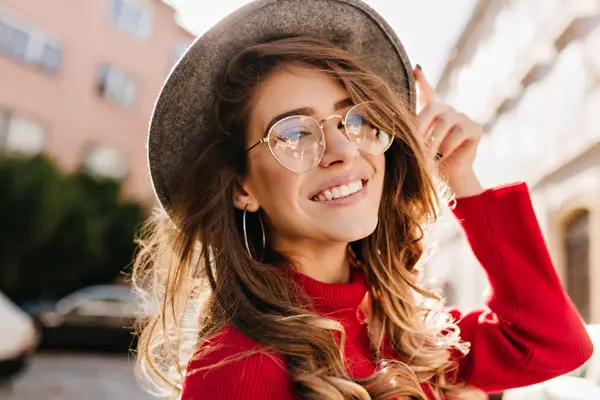
White balance is also essential when shooting fashion photos as it helps ensure colors appear accurate in your images. For the most accurate results, manual white balance is recommended to fine-tune your settings and achieve desired outcomes. Additionally, experimenting with custom white balance settings can yield some interesting results too.
Fashion photographers must also take into account other factors such as lighting setups and equipment used when shooting their subjects. For example, using a prime lens will give you better control over depth-of-field than a zoom lens would while softbox lights provide softer illumination than traditional studio strobes do; both are useful tools for creating beautiful fashion photographs. Similarly, having makeup artists on set will help bring out the best features of your models which adds another layer of professionalism to any shoot.
Lighting Techniques for Fashion Photography
For fashion photography, the proper illumination is a must for any successful shoot. The right lighting can make or break a photo, so it’s important to know the different techniques and when to use them.
Natural light is often preferred for fashion photography because it creates softer shadows and gives a more natural look. At times when natural light is not accessible or sufficiently bright, alternate lighting such as studio strobes can be utilized to generate brighter pictures with more control over the direction and intensity of illumination.
Soft lighting tends to give photos a more dreamy look while hard lighting adds contrast and drama to an image. Soft lights are usually created by diffusing direct sunlight or using larger softboxes in a studio setting, whereas hard lights are created by focusing direct sunlight through smaller modifiers such as snoots or grids. Both types of lighting have their place in fashion photography; it simply depends on the mood you wish to create with your photos.
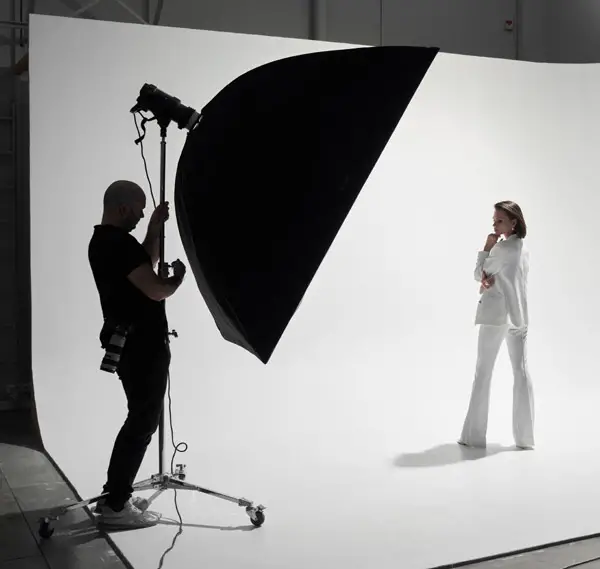
Lighting techniques for fashion photography can be a powerful tool in creating the desired mood and atmosphere.
Positioning the lights correctly is paramount to achieve the desired results; a technique called “rimming” can be used, which entails using multiple sources from different directions to create depth within a scene. Backlighting will emphasize edges around objects, making them stand out against darker backgrounds when viewed through camera lenses. An experienced photographer will know how to manipulate light and shadow in order to bring out texture while highlighting details such as jewelry or accessories that need emphasizing for commercial purposes.
Movement in Fashion Photography
Posing models is an important aspect of fashion photography. A good pose can help bring the clothes and the model to life, while a bad pose can ruin a shot. Creating a lively picture necessitates thought about the model’s movements and how they relate to their surroundings. It’s also essential that photographers communicate clearly with their models about what kind of poses they want them to do. Experienced photographers often use simple cues such as hand gestures or words like “lean forward” or “turn your head slightly” in order to get the desired effect from a pose.
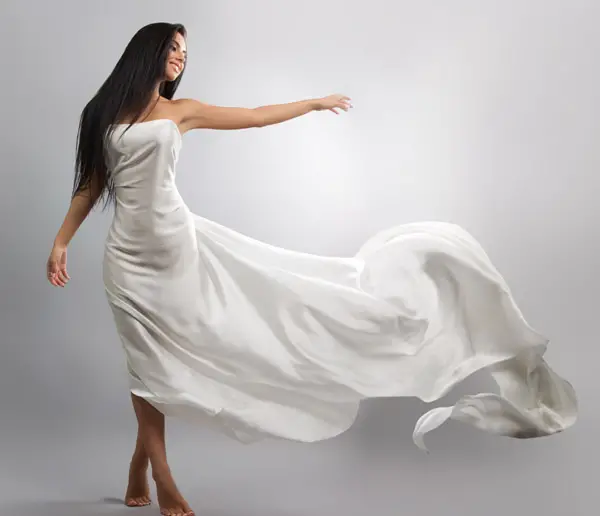
Capturing motion in still images is another key element of fashion photography. This can be done by having the model move quickly during exposure time or by using techniques such as panning (moving camera while taking photos) or zooming (changing focal length during exposure). Photographers must also take into account factors such as shutter speed and lighting when capturing motion, as these will affect how much blur appears in an image and ultimately determine its success or failure. Additionally, props can be used to add interest and drama to shots – for example, throwing fabric around a model for dramatic effect or using wind machines for hair-blowing shots.
Movement in fashion photography can be a powerful tool to create beautiful and captivating images. Composition is the next step to perfecting your photos, as it helps you frame the shot for maximum impact.
Composition in Fashion Photography
When it comes to composition in fashion photography, two techniques stand out above the rest: the rule of thirds and framing the shot. The rule of thirds is a classic technique used by photographers for centuries. It’s based on an idea that if you divide an image into nine equal parts, four lines will intersect at certain points forming a grid. By placing your subject along these intersections or along one of the lines, it creates balance and interest in your photo. This technique helps draw attention to the focal point of your image while also creating visual tension that can be very pleasing to look at.
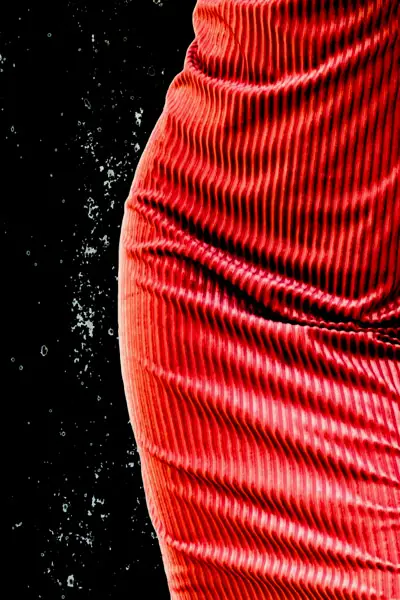
Framing is another popular composition technique used in fashion photography. By utilizing framing, elements such as trees, buildings or people can be incorporated into the composition to create depth and perspective while also highlighting important details and drawing attention away from any distractions. You can also use framing to highlight important details or draw attention away from distracting elements within a scene. For example, if there’s a lot going on around your model but you want them to be front and center then using frames like arches or doorways can help direct viewers’ eyes directly towards them without any distractions getting in their way.
Composing the shot correctly is essential for capturing stunning fashion photography. Once the models are arranged, it’s time to delve into discovering them and getting them prepped for your photoshoot.
Finding Models for Fashion Photography
Finding models for fashion photography can be a daunting task. But with the right resources and knowledge, it doesn’t have to be. Model agencies and casting calls are two of the most common ways to find models for your shoots.
Model Agencies
Model agencies provide a wide range of talent from amateur to professional level models that specialize in different looks, sizes, and skillsets. They also offer photographers access to their database of potential model candidates who meet certain criteria such as age or body type. When working with an agency you should always ask about any additional fees or contracts that may apply before booking a shoot with them.
Casting Calls
Casting calls are another way to find potential models for your shoots by advertising on sites like Craigslist or posting flyers around town. This method allows you to reach out directly to local people who may not have experience modeling but could still make great subjects for your photos if they fit the look you’re going for. Make sure you thoroughly vet each candidate through an interview process prior to booking them so that both parties know what is expected during the shoot day itself.
Websites
Check out websites like Model Mayhem which feature professional models from all over the world looking for work opportunities. Here is a link to our list of alternatives to Model Mayhem. When selecting models it’s important they have unique looks that fit with your concept; alternatively you could opt for real people instead of professionals if you want something less polished but equally impactful.
FAQ
What do I need to know about fashion photography?
Fashion photography is an art form that requires a unique skill set. It involves understanding the elements of composition, light and shadow, styling, posing and post-production editing to create aesthetically pleasing images. A successful fashion photographer needs to have knowledge of current trends in fashion and be able to work with models while capturing them in their best light. Additionally, they must understand how to use different lenses for specific effects as well as be aware of proper etiquette when shooting on location or in a studio setting. The capacity to be imaginative and take note of the finer points is a must for creating eye-catching shots.
How to practice fashion photography?
Practicing fashion photography requires an understanding of the fundamentals of light, composition and camera settings. To start, use natural lighting when possible to create beautiful images with interesting shadows and highlights. When shooting indoors, experiment with various artificial lights such as strobes or continuous lighting in order to achieve desired results. Pay attention to composition by finding creative angles that flatter your subject’s features while also creating a pleasing visual aesthetic for the image overall. Adjust your camera settings according to the desired outcome; from shallow depth-of-field portraiture to wide angle landscape shots.
Fashion photography requires an eye for detail and a creative approach. To hone your fashion photography skills, begin by mastering the fundamentals of lighting, composition and camera settings; then use those principles to explore various angles and perspectives. Take time to study images from other photographers in order to understand what works best. Experiment with different angles and perspectives while shooting on location or in a studio setting. Edit your photos with diligence before you put them out there or present them for review. With dedication and practice you can become an expert at capturing beautiful fashion shots.
What is the basic rule in fashion photography to concentrate on?
The basic rule in fashion photography is to focus on the subject. This means paying attention to composition, lighting, and angles that bring out the best features of the model or clothing. Paying attention to details such as hair, makeup, jewelry, and accessories can also help enhance a photo. Selecting a suitable backdrop for your pics can assist in crafting an aesthetically pleasing image. Taking the time to plan out your shoot and paying attention to the details will help you capture stunning fashion photography.
Conclusion
This guide to fashion photography has provided an overview of the different types, equipment needed, cameras and lenses best suited for fashion photography, settings and lighting tips as well as movement, composition and models. We hope that this information will help you take your first steps into the world of fashion photography with confidence. With a bit of effort, you can become an accomplished photographer.
Click the following link to learn more about movement in fashion photography.








